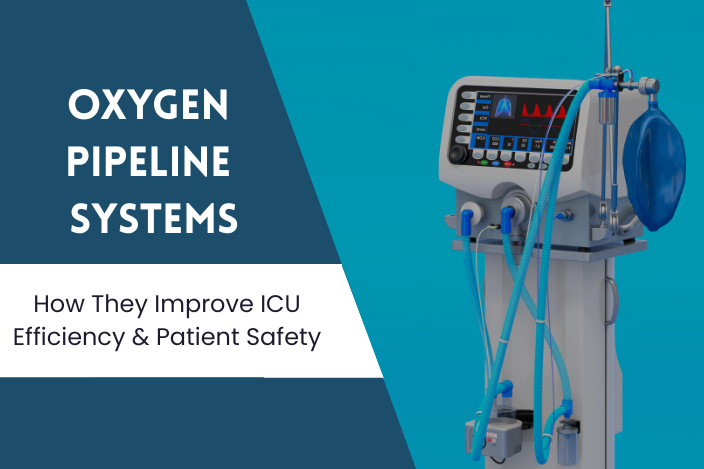.png)
Published on 05-09-2025
ICU Beds: Three Function vs Five Function Beds – A Complete Guide for Hospitals
When hospitals set up or upgrade their intensive care units (ICUs), one of the most critical choices is the type of ICU bed. The two most common models are three-function ICU beds and five-function ICU beds. Both serve important roles, but they are designed for different levels of care.
This detailed guide explains the features, differences, costs, and clinical uses of these beds so hospital managers, procurement teams, and healthcare providers can make informed decisions.
What is a Three-Function ICU Bed?
A three-function ICU bed is considered the standard in many hospitals. It supports three essential movements:
-
Backrest adjustment – raises or lowers the head section for patient comfort, feeding, or breathing support.
-
Leg rest adjustment – elevates or lowers the legs to aid circulation or reduce swelling.
-
Height adjustment – moves the whole bed higher or lower, making care easier for staff and transfers safer for patients.
These beds are often used in general wards, step-down units, and small ICUs. They cover the basic needs of patient positioning and comfort.
Hospitals can explore our ICU Beds Collection to see available three-function models.
What is a Five-Function ICU Bed?
A five-function ICU bed is more advanced and designed for critically ill patients. It includes all the functions of a three-function bed plus:
-
Trendelenburg and Reverse Trendelenburg – tilts the entire bed forward or backward. Doctors use this for blood flow support, certain surgeries, and respiratory care.
-
Lateral tilt / Fowler position – allows the patient to lie in a semi-reclined or side-tilted position, which improves lung expansion and lowers the risk of bedsores.
Because of these features, five-function beds are common in modern ICUs where patients need round-the-clock monitoring and frequent repositioning.
For more details, read our ICU Bed Buying Guide for Hospitals.
Key Differences Between Three and Five-Function ICU Beds
| Feature | Three-Function Bed | Five-Function Bed |
|---|---|---|
| Backrest | Yes | Yes |
| Leg rest | Yes | Yes |
| Height adjust | Yes | Yes |
| Trendelenburg | No | Yes |
| Lateral tilt | No | Yes |
| Cost | Lower | Higher |
| Care level | Basic | Advanced |
Cost Comparison
Three-function beds are more affordable. They are suitable when budgets are tight or when patients need only short ICU stays.
Five-function beds cost more but often pay off in the long run. They reduce complications such as pressure sores, improve patient comfort, and reduce staff strain. Hospitals that invest in them often see lower long-term care costs.
Patient Care Outcomes
-
Three-function beds work well for stable patients who require basic positioning.
-
Five-function beds support better lung care, reduce risk of ulcers, and allow more precise patient positioning.
For hospitals that treat patients with cardiac, respiratory, or neurological issues, five-function beds improve outcomes significantly.
Staff Workload and Efficiency
Nurses and doctors benefit from beds with more automated features. Five-function beds often include motorized controls that reduce manual strain. This lowers fatigue for staff, especially in busy ICUs.
Three-function beds may be partly manual, which adds extra effort during frequent repositioning.
Safety Features
Modern five-function beds often include safety rails, side tilt alarms, and programmable positions. These reduce the risk of falls and improve patient security.
Three-function beds, while safe, may lack some of these advanced safety features.
Which Bed Should Hospitals Choose?
The choice depends on:
-
Hospital size – Small hospitals may prefer three-function beds for cost savings.
-
Type of patients – Advanced ICUs treating critical patients need five-function beds.
-
Budget – Hospitals with higher budgets can invest in five-function beds for long-term value.
A mixed approach often works best: three-function beds in general wards and five-function beds in advanced ICUs.
Why ICU Bed Selection Matters
ICU beds are not just pieces of furniture. They are vital medical tools. The right bed helps:
-
Improve patient comfort and safety
-
Reduce the workload for caregivers
-
Support advanced clinical procedures
-
Lower risks of complications during long ICU stays
To get advice on choosing the right bed, visit our Contact Page.
Related Guides
FAQs
1. What is the main difference between a three-function and a five-function ICU bed?
A three-function bed offers head, leg, and height movement. A five-function bed adds Trendelenburg and lateral tilt.
2. Which ICU bed is better for small hospitals?
Three-function beds are often enough for general care in small hospitals.
3. Are five-function beds worth the higher cost?
Yes, especially for advanced ICUs. They support better patient outcomes and reduce staff strain.
4. Do five-function beds lower the risk of bedsores?
Yes. The ability to tilt patients into more positions reduces pressure buildup.
5. How can hospitals order ICU beds?
Hospitals can view our Products Page or connect directly through our Contact Us page.

.png)
.png)
.png)
.png)













.png)
